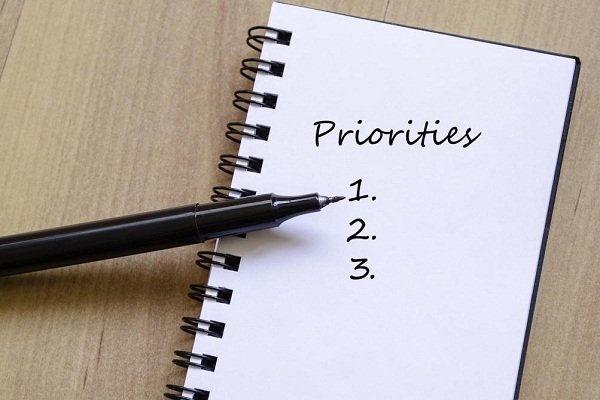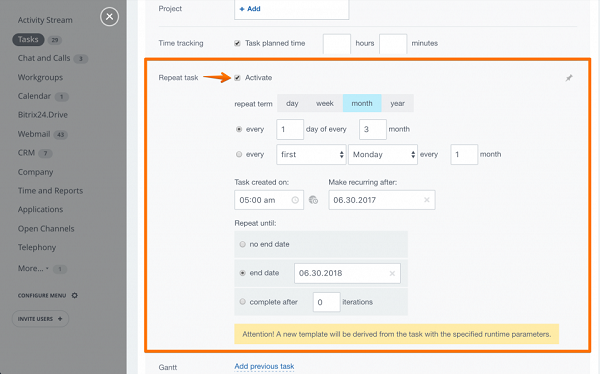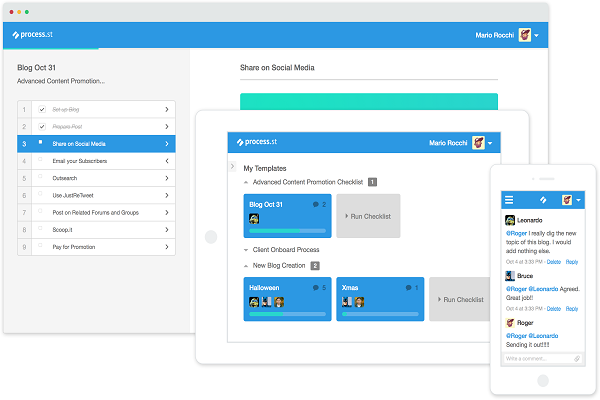Benjamin Brandall
Benjamin Brandall is a content marketer at Process Street, where he writes on startups, SaaS, and workflows. In his spare time, he runs Secret Cave, a blog about obscure entertainment and internet culture.
Everyone wishes to improve their workflow and hit the target, but very few can achieve it. Here’s a write-up that talks about effective task management so that you can smash your productivity and hit your goals.
Attaining a strong daily workflow is a goal load of us share.
With a workflow that functions smoothly and prioritizes tasks effectively, you are able to get more done and overcome those challenges which hold you back from hitting your targets.
In this article we’re going to look at 3 different areas which are important to consider in order to improve your daily workflow:
These three tips won’t change everything overnight - particularly if that night is made up of very little sleep! But I’m not here to tell you how to live your life. You already know that you need to be eating and sleeping well to maximize your output.
You don’t need me to tell you that. I’m here to evangelize about effective task management so you can smash your productivity and hit your goals!
Let’s go!
You only have a certain limited amount of time in each day.
Maybe you work 8 hour days? Maybe you work 12 hour days? Maybe your name is Elon Musk and you somehow work 18 hour days?
Either way, your time is limited. Your time is valuable.

Because of this, you shouldn’t be allocating time to things which are not valuable. For each task you’re doing you need to know how much time you can reasonably spend on it and how valuable that task is for facilitating the following tasks.
How do you do this, and how do you do it effectively?
I’m a big believer in systemizing your day and making it natural for you to get the work done which you need to get done. When you create patterns and systems you begin to adopt these behaviors as second nature. Your key is to create systems which work.
My system for prioritizing tasks is to start my day - every day - planning out what tasks I have to undertake. I try to understand each task and estimate its relative importance and how long it will take to complete.
Sometimes this will be super simple and take me 5 minutes. Other times, when I have a range of new challenges in front of me, or an article to write which will require a lot of research, this planning session may take significantly longer. But I can’t let it take more than 20 minutes, otherwise, I’m falling victim to the very problem I’m using this planning to solve.
I start my day - every day - planning. It’s second nature.
You’re naturally more alert in the morning. Because of our circadian rhythms, or cognitive functioning is highest from morning until early afternoon, with diminishing returns as time goes by.
For this reason, I put my more creative tasks in the morning. These creative tasks are not really repeatable because every article you write is different and every problem you have to solve requires a different solution.

However, come the afternoon when your cognitive performance has started to slide a little, you’re still very able to do more simple manual tasks. You can help yourself achieve this by allocating your repeatable tasks to the afternoon.
For these repeatable tasks, you can create processes to follow to complete them. By optimizing your processes over time, you’re able to push yourself into providing your best work every time. The process stops you wasting valuable cognitive energy on wondering what to do next or how a task should be performed. Instead, you can focus on completing the task, safe in the knowledge that you’re doing it the best way.
For example, if I want to write an article and prepare it for publication, I can block out my morning for the research and writing - the creative tasks - and dedicate the afternoon to the editing, formatting, and proofing.
This means I get the most important tasks out first while my mind is sharpest, and follow up with the next most important while my performance is lower.
If you work in a way in which you’re dragged in every direction all the time, then this kind of prioritizing will buy you peace of mind. You just need to remember to say no to people sometimes. You’re working on your schedule.
There are so many tools I’d love to recommend to you.
Ones I’m not going to shout about here are Slack, Airtable, and Zapier.
If you work in a team, you should be using Slack to help you communicate in a way which fits in your workflow rather than pierces it.
If you’re working with large amounts of information or data, you should check out Airtable as your database-as-spreadsheet system.
If you have a load of repeatable processes, you should investigate whether Zapier could help you with process automation. (Don’t tell anyone, but I am in love with Zapier. Full blown love)
The two tools I’m going to focus on are simply the tools I use every day to help me manage my workflow.
For task management I use Trello. Each day when I begin work I open up Trello and go to my personal board to mark out the different tasks I’m going to do that day. Trello operates using a Kanban style card system which you can move from column to column to demonstrate progress. I also have multiple other shared boards with other team members where we can collaborate on work or follow each other’s progress if we need to.
Side point: If you use a productivity methodology like the Pomodoro technique, you can find an integration for Trello called Pomello which links your cards up to a timer to help you follow your 25 minutes on / 5 minutes off working patterns. I don’t use the Pomodoro technique anymore as I feel I require slightly longer periods of focus when I write, but I have used it considerably in the past and can certainly vouch for it.
The second tool I work from is Process Street which helps you map and follow your repeatable processes. We have a library of processes from across the team plus personal ones of my own. When I’m doing my more repeatable tasks in the afternoon, I’m always following a process in order to get it done.

Between these two tools, I’m able to set structures in place to guide me through my work day, keeping me at my most productive.
This is what I do. What do you do? Let me know in the comments which tools or methodologies you employ to power yourself and drive your workflows.
You’ll also receive some of our best posts today

Benjamin Brandall is a content marketer at Process Street, where he writes on startups, SaaS, and workflows. In his spare time, he runs Secret Cave, a blog about obscure entertainment and internet culture.
In this digital era, every business is in the...
These days, it is very important to design an...
You don't often see the terms web design and...

User reviews are a game-changer for e-commerce. Consumers rely heavily o...
Don’t miss the new articles!